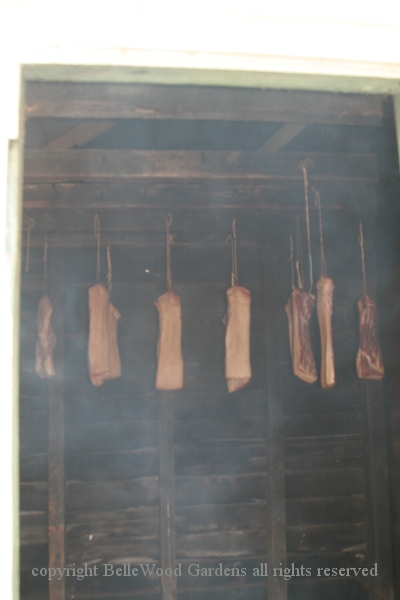
.
If you have any comments, observations, or questions about what you read here, remember you can always Contact Me
All content included on this site such as text, graphics and images is protected by U.S and international copyright law.
The compilation of all content on this site is the exclusive property of the site copyright holder.
Traditional Smokehouses
Sunday, 4 November 2018
Go to the supermarket to buy, among other things, some bacon. So many - too many! - choices. In the United States most bacon is made from the belly or side of the pig. Unless it is jowl bacon, from the cheek. In the UK bacon is called rashers, a cut with a mix of lean loin meat and fatty belly meat. Then there's very meaty Irish bacon, also known as back bacon or Canadian bacon, from the loin. Do you want thin, regular, or thick cut. Is it fresh, cured, or smoked. Decisions, decisions.
Ever being one who wants to do it myself, once upon a time, now that fresh pork belly is available in the stores I decided to make some bacon. And it was very good.
I found myself wondering - how this was done in the past. How did they make bacon?

It was December 2015 when my friend Bill Woodall and I went to a holiday event at Ramsayburg Homestead, an 18th century tavern / inn on the Delaware River in Knowlton Township, Warren County, New Jersey. The event description mentioned that there would be a smokehouse demonstration. Bill and I walked down to the smokehouse where slabs of bacon were veiled in fragrant applewood smoke. Myron Baley was providing custom-cured bacon for holiday gift-giving. He and I had a pleasant conversation about curing bacon. He uses brown sugar or molasses or sorghum or honey, but not maple syrup. That day's batch was with honey. And very tasty it was too.
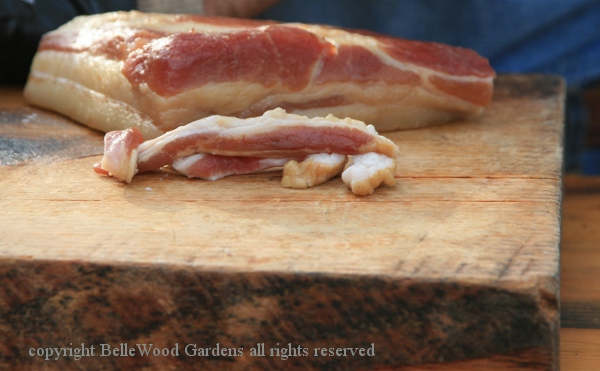
.
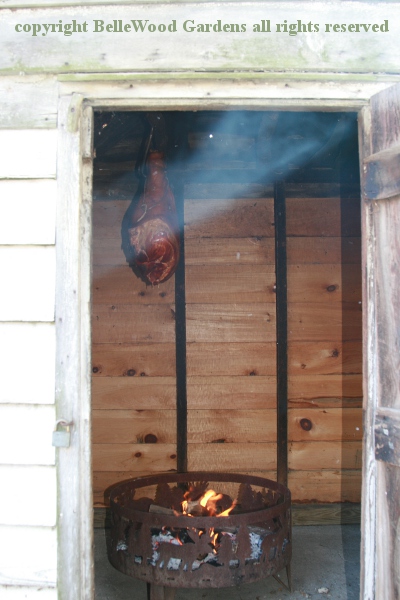
The next year Bill and I went to Harmony Township, for the Van Nest Hoff-Vannatta Farmstead event in early November 2016. They also had a smokehouse in operation. Not bacon, this time, but a ham, smoked to a rich mahogany brown.
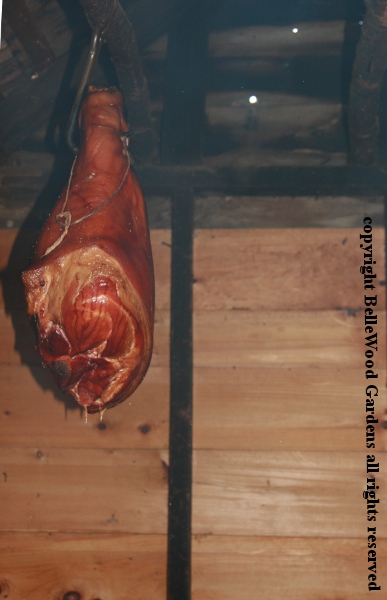
.

Across the river, in Pennsylvania, there's a contemporary smokehouse
that butchers game for hunters. And also smokes venison hams.
Today I once again visited Bouman Stickney Farmstead Museum,
this time for a presentation about traditional smokehouse use.

Susan McLellan Plaisted of Heart to Hearth traditional cookery
offers another of her well researched and accurate presentations.
The weather ideal, and the smokehouse being outdoors, so are we.
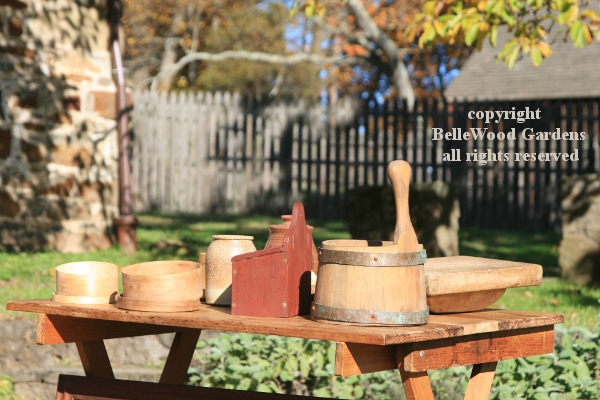
There are boxes and firkins and small containers, each holding
a necessary ingredient: salt, sugar, saltpeter, molasses, and more.
In this area, we were told, butchering would take place in December. The large cuts of meat to be cured and preserved were brined in January for 4 to 6 weeks. If they were to be smoked, for flavor rather than preservation, that would take place in February.

This smokehouse was built in March 2017 as an eagle scout project.

It is a classic design, with an exterior firebox, lined with fire brick. This type of design simplifies checking the fire, which needs to be done every 3 hours or so. Much better than opening the smokehouse door, releasing all the good smoke. With this design, the smoke feeds through a flue pipe into the smokehouse. There's a layer of gravel under the pipe, soil and rocks heaped over it. The smoke cools as it travels from firebox to smokehouse. Hickory was a popular wood.
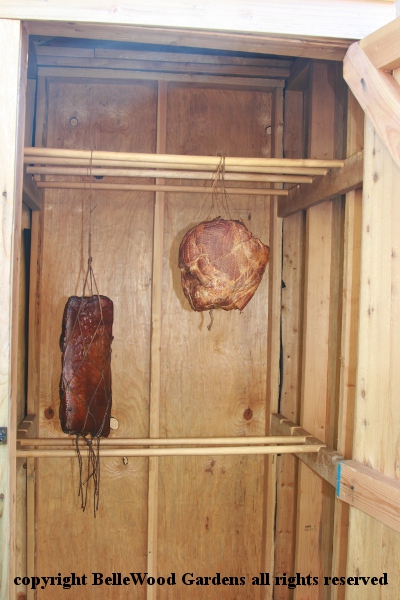
Inside the smokehouse, a flitch of bacon and shoulder of pork.
They are demonstration only, for today's program. Otherwise
someone would need to be here, periodically checking the fire.

Too much smoke escaping through openings. There needs to be a little work
done to close the gaps. Not just keep the smoke in, but also insects and pests out.
Another interesting day at the Bouman Stickney Farmstead Museum.
UPDATE: Sunday, 9 December 2018

Today I went to Tassot Apiaries looking for sweet honey gifts for the holiday season.
And what did I see, as I strolled around the back of Buzzing Acres, but a smokehouse.
A very nice design - again an external firebox. Plus convenient covered wood storage.
Back to Top
Back to November 2018
Back to the main Diary Page